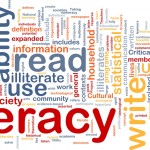
A 2005 report by the National Institute of dental and craniofacial research in the USA defined oral health literacy is defined as the degree to which individuals possess the capacity to obtain process and understand the basic oral and craniofacial information and services necessary to make appropriate oral health decisions.
The aim of this review was to assess the association of oral health literacy (OHL) with oral health behaviours, perception, knowledge, and dental treatment related outcomes.
Methods
Searches were conducted in the Medline, Web of Science, Scopus, Cochrane Library, The National Institute for Health and Clinical Excellence (www.nice.org.uk), Lilacs and The Brazilian Library of Dentistry (BBO), Controlled-trials Database of Clinical Trials , and Clinical Trials – US National Institute of Health . Cross-sectional, case-control, cohort, and clinical trials that investigated the relationship between OHL and dental treatment related outcomes, perception of oral health and oral health behaviours were considered.
Two reviewers independently selected studies, abstracted data and assessed risk of bias using the Newcastle-Ottawa scale for case-control and cohort studies and a modified version for cross-sectional studies. The Cochrane risk of bias tool was used for clinical trials. Summary measures were extracted and a random effects meta-analysis carried out.
Results
- 25 studies were included in the qualitative summary
- 21 studies were cross-sectional, 2 cohorts, 1 case-control, 1 clinical trial.
- A majority (17) of the studies were considered to have a high risk of bias.
- 9 studies investigated the relationship between OHL and visit to the dentist (frequency, reason, missed dental appointments)
- 4 studies looked at toothbrushing frequency with most studies finding no association with OHL. Dental anxiety and night bottle-feeding were associated with low OHL.
- 9 studies evaluated oral health knowledge with most reporting an association with higher OHL.
- 6 studies investigated self-perception of oral health among adults
- 3 studies contributed to a meta-analysis that showed no association between OHL and frequency of visit to the dentist for adults.
- The literature was inconclusive regarding the association between OHL and dental treatment outcomes, oral health behaviours, and oral health perception.
Conclusions
The authors concluded: –
The current scientific evidence suggests that no association exists between OHL and any of the outcomes investigated. Further prospective studies with a higher methodological quality are necessary to confirm the evidence.
Comments
Health Literacy is a developing area of research and is a growing priority of public health agendas. A growth in interest in oral health literacy is also being seen. The authors of this review have searched a broad range of databases identifying a number of studies which have been assessed using recognised tools. However, 68% of the included studies were considered to be at high risk of bias. Previously we have looked at a review of tools for the assessing oral health literacy (Dental Elf – 10th Dec 2014). This highlighted that many of the tools were at the early stages of development and testing and currently focus more on word recognition, numeracy and reading skills, rather than what this means in terms of health behaviours and service utilisation. This point noted by the authors and needs to be considered in assessing the findings of this review. The authors also highlight that many of the included studies come from the same research group.
Links
Primary Paper
Firmino RT, Martins CC, Faria LDS, Martins Paiva S, Granville-Garcia AF, Fraiz FC, Ferreira FM. Association of oral health literacy with oral health behaviors, perception, knowledge, and dental treatment related outcomes: a systematic review and meta-analysis. J Public Health Dent. 2018 Mar 2. doi: 10.1111/jphd.12266. [Epub ahead of print] PubMed PMID: 29498754.
Original Review protocol on PROSPERO
Other references
National Institute of Dental and Craniofacial Research, National Institute of Health, U.S. Public Health Service, Department of Health and Human Services. J Public Health Dent. 2005 Summer;65(3):174-82. PMID: 16171263
Dental Elf – 10th Dec 2014
Oral health literacy: current tools biased towards word recognition, numeracy and reading skills
